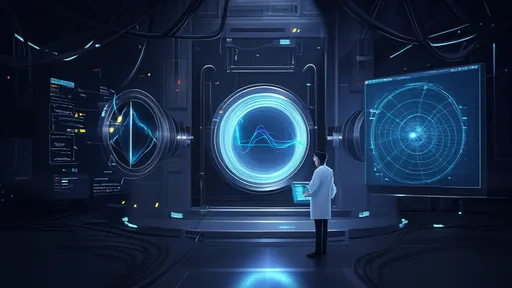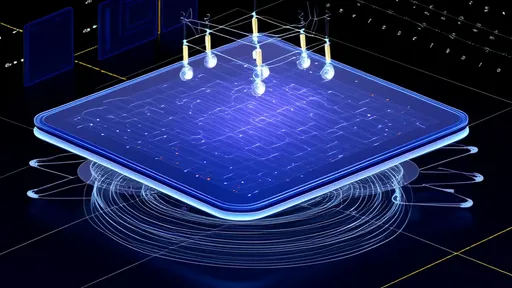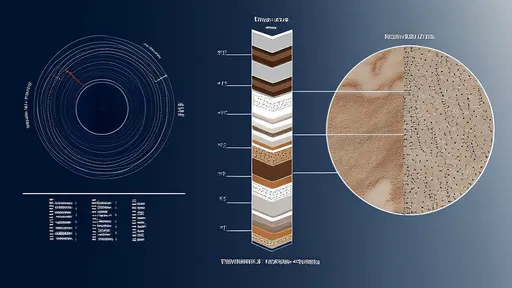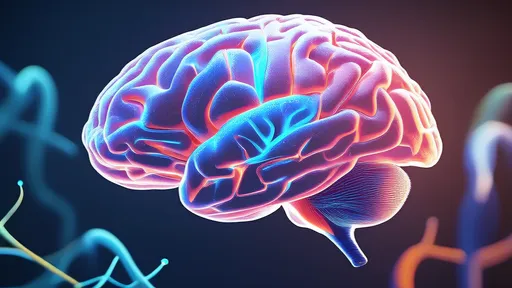The human brain operates as a symphony of electrical impulses, where timing is everything. Recent advances in neuroscience have uncovered a fascinating phenomenon known as neural oscillation synchronization—a process where distant brain regions coordinate their electrical rhythms to facilitate communication. This discovery is reshaping our understanding of how cognition, perception, and even consciousness emerge from the brain's intricate networks.
At the core of this phenomenon are neural oscillations, rhythmic or repetitive neural activity patterns generated by the synchronized firing of neurons. These oscillations occur across different frequency bands, each associated with specific cognitive functions. For instance, gamma waves (30-100 Hz) are linked to attention and memory, while theta waves (4-8 Hz) play a role in spatial navigation and emotional regulation. What’s remarkable is how these oscillations synchronize across brain regions, creating transient functional networks that adapt moment-to-moment.
The mechanics of synchronization involve precise timing mechanisms that allow neurons to align their firing patterns. One prevailing theory suggests that synchronization is mediated by inhibitory interneurons, which act as pacemakers to entrain larger neuronal populations. Another hypothesis points to the role of white matter tracts—the brain’s communication highways—in facilitating long-range synchronization. When these pathways are disrupted, as in conditions like schizophrenia or epilepsy, the consequences for cognition can be profound.
Researchers are now using advanced techniques like magnetoencephalography (MEG) and intracranial EEG to map these synchronized networks in unprecedented detail. A 2023 study published in Nature Neuroscience demonstrated how visual and prefrontal cortex oscillations synchronize during working memory tasks, with tighter synchronization correlating with better task performance. This finding underscores the functional significance of neural coherence—the idea that synchronized oscillations enable efficient information transfer between brain areas.
Clinical implications are beginning to emerge. Non-invasive brain stimulation methods, such as transcranial alternating current stimulation (tACS), are being tested to artificially enhance synchronization in disorders like Alzheimer’s disease. Early trials show promise in improving memory by restoring theta-gamma coupling in the hippocampus. Meanwhile, neurosurgical teams are exploring how real-time oscillation monitoring could guide more precise interventions in epilepsy surgery.
Beyond clinical applications, this research is fueling philosophical debates about the nature of consciousness. Some theorists propose that synchronized oscillations may constitute the "neural correlate of consciousness," providing a temporal framework for integrating disparate sensory inputs into a unified perceptual experience. This idea gains traction from studies showing that loss of consciousness—whether from anesthesia or sleep—coincides with the breakdown of long-range synchronization.
As the field progresses, challenges remain. The brain’s oscillatory patterns are notoriously variable between individuals and even within the same person across different states. New machine learning approaches are being deployed to decode this variability, with some labs developing personalized "neural fingerprint" models that account for individual differences in oscillatory profiles.
What makes neural synchronization particularly captivating is its universality. From the millisecond-scale coordination required for speech production to the slow, mood-regulating rhythms of limbic system interactions, this mechanism operates across all temporal scales of brain function. It’s as if the brain has evolved its own wireless communication protocol, where timing isn’t just a feature—it’s the very foundation of how we think, feel, and perceive the world.
The next decade promises to unravel deeper layers of this mystery. With the advent of ultra-high-field MRI and quantum sensors capable of detecting single-neuron activity, we may soon witness a paradigm shift in how we understand the brain’s rhythmic language. One thing is certain: the study of neural oscillations has moved far beyond mere brainwaves—it’s revealing the conductor behind the mind’s symphony.

By /Jun 19, 2025

By /Jun 19, 2025

By /Jun 19, 2025

By /Jun 19, 2025

By /Jun 19, 2025

By /Jun 19, 2025

By /Jun 19, 2025

By /Jun 19, 2025

By /Jun 19, 2025

By /Jun 19, 2025

By /Jun 19, 2025

By /Jun 19, 2025

By /Jun 19, 2025

By /Jun 19, 2025

By /Jun 19, 2025

By /Jun 19, 2025

By /Jun 19, 2025